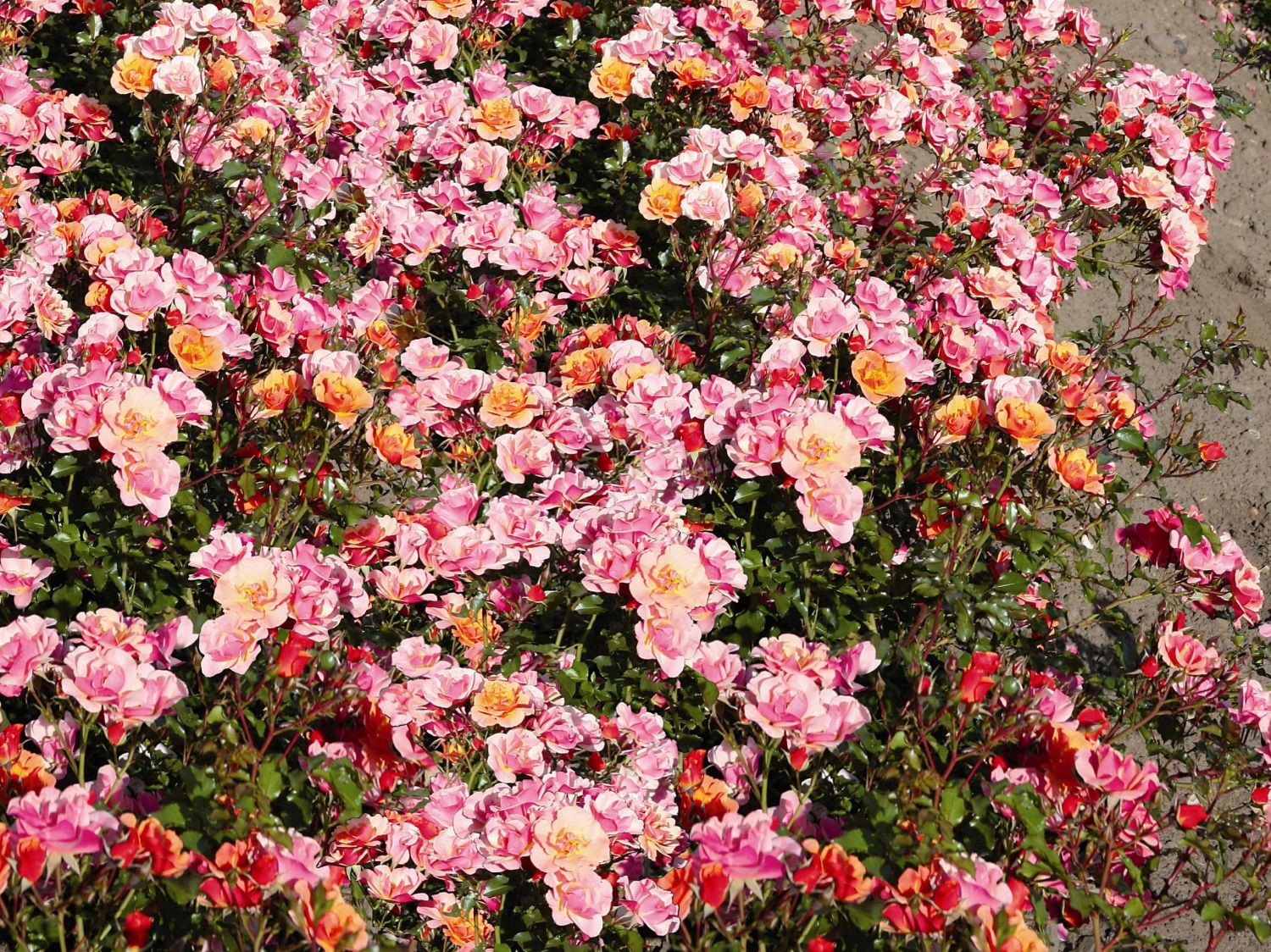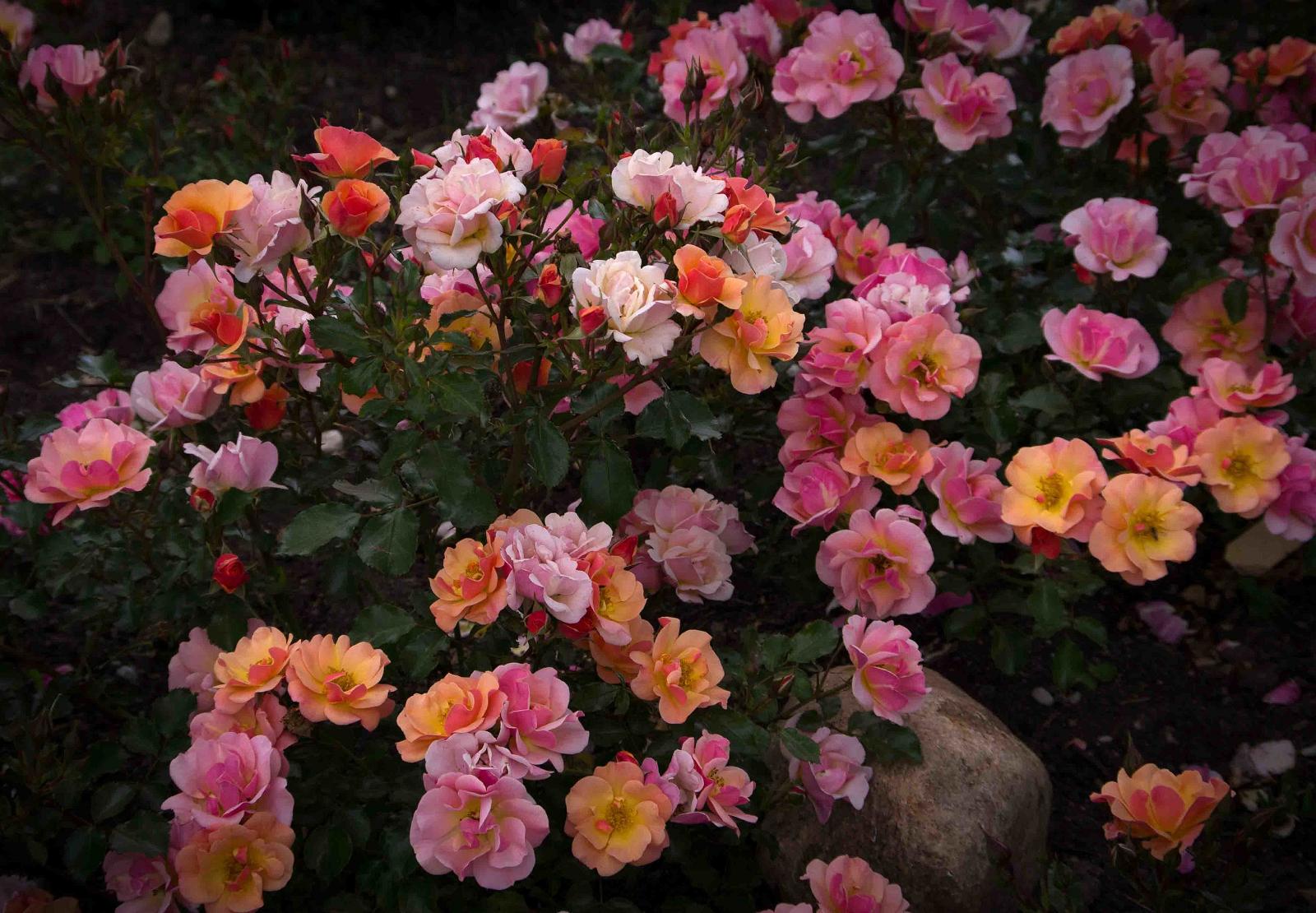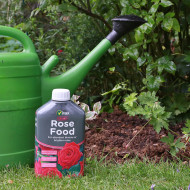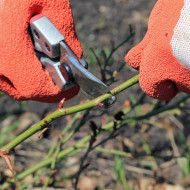Growing a ground cover rose Jazz in the garden: recommendations for beginners
Content
- 1 The history of the creation of the variety
- 2 Description and characteristics of rose Jazz
- 3 Advantages and disadvantages of the variety
- 4 Rose Jazz at a Glance Video
- 5 Features of agricultural technology of the ground cover rose Jazz
- 6 Common mistakes of rose growers
- 7 Reviews of gardeners about rose Jazz
The history of the creation of the variety
Rose Jazz was bred in 2003 in the German nursery Tantau. The full name of the variety sounds like That’s jazz. Despite a short period of existence, this climbing plant has won the hearts of hundreds of flower growers. In addition, the Jazz ground cover rose has won many flower festivals and competitions.

Description and characteristics of rose Jazz
The crop is a shrub covered with many small flowers. The height of the bush, as a rule, does not exceed 70 cm, and the diameter is 50 cm.The plant blooms for a very long time, practically without interruption. The number of flowers is enormous: up to 10 buds are formed on one stalk, the diameter of which reaches 4 cm. The flowers of the ground cover rose Jazz are semi-double. At the time of blooming, the flowers are orange in color, however, as the buds open, they acquire a delicate peach hue.
Despite the high indicators of decorativeness, the culture is characterized by excellent frost resistance. The plant easily tolerates long-term rainfall and quickly recovers from frost. In addition, the Jazz rose is resistant to all kinds of fungal diseases.

Advantages and disadvantages of the variety
- long flowering period;
- resistance to pests and fungal diseases;
- winter hardiness and resistance to excessive soil moisture;
- comparative unpretentious care;
- no need for regular pruning;
- the ability to self-remove from faded buds;
- wide application in landscape design.
- susceptibility to fungal diseases in case of non-compliance with the irrigation regime;
- the presence of sharp thorns that complicate the process of tying and trimming;
- slow growth of culture in shady terrain.
Rose Jazz at a Glance Video
This video examines the main varietal qualities of a horticultural crop.
Features of agricultural technology of the ground cover rose Jazz
One of the main advantages of the Jazz variety is its long flowering period. So, the first flowers appear on the shrub in June, and the culture fades in mid-October. However, in order to enjoy the fragrant flowering of the shrub for so long, certain agricultural practices must be observed.
How and where to plant
To determine the most suitable landing site, it is important to consider the following rules:
- Groundwater. They should be at least 100 cm deep from the roots of the bush. Otherwise, the root system can simply rot.
- Air circulation. Free air circulation is very important for a ground cover rose. It prevents stagnation of liquid in the soil.
Lowlands or swampy areas are absolutely not suitable for planting. Here the plant can rot.
A rose is planted in mid-spring.In the fall, planting should be carried out in a short time, because there is a great risk that the plant will not take root. As for the composition of the soil, it is worth giving preference to loamy or black earth options - the Jazz rose is very fond of soil with a low level of acidity.
The depth of the planting hole should be about 60 cm, and its diameter should be 70 cm. After the plant has been placed in the depression, it is important to carefully spread the roots. As soon as planting is complete, the crop is watered with warm water and mulched with a thick layer of peat.
It should be borne in mind that the landing site should not be in the open sun all day long. The most suitable place is partial shade. Otherwise, the plant can get sunburn and die.

How to care
The main procedures for caring for a Jazz rose include weekly loosening, watering every 2-3 days and feeding. Watering should be done only after the topsoil is completely dry. One bush requires about 15 liters of water. Beforehand, it should be heated in the sun. Closer to autumn, the frequency of watering is gradually reduced, and with the onset of September it completely stops.
Top dressing is carried out twice a season. For the first time, in early spring, nitrogen compounds are introduced to stimulate crop growth. The second top dressing is done in the summer using potash and phosphorus fertilizers. They affect the formation of buds, maintain a high level of plant immunity.
In the spring, sanitary pruning should be carried out, during which all damaged, dry shoots will be removed. In the fall, this procedure can be repeated to thin out the shrub a little.
Despite its resistance to cold weather, it is still recommended to cover the plant for the winter. As a heater, coniferous spruce branches are used, which are laid between the branches and on top of the shrub. Gardeners who live in regions with cold winters often make special frames. They are put on plastic bags, which provide reliable protection of the crop from wind and frost.
- Watering mode
- Top dressing with mineral compounds
- Spring pruning
Common mistakes of rose growers
The most common mistakes gardeners make when growing Jazz include:
- Planting rose bushes close to large plants. Large crops literally take away nutrients from shrubs, as a result of which roses become more susceptible to diseases.
- Excessive watering. An excess of liquid in the soil contributes to an increase in the level of soil acidity. This, in turn, makes it difficult for oxygen to enter the ground.
Reviews of gardeners about rose Jazz
Reviews of gardeners speak of the unpretentiousness and high decorative qualities of the Jazz variety.
“I love roses, I have been growing them since my youth. A couple of years ago I got acquainted with the Jazz variety. At first I was skeptical - there were doubts about frost resistance. But after the first winter, which the bushes survived without problems, I was convinced of the quality of the variety. "
“In my opinion, this is an excellent variety for the middle lane. He firmly tolerates frost and almost never gets sick. Otherwise, caring for the Jazz rose is very simple. Therefore, keeping these rose bushes is a pleasure for me! "
Compliance with simple norms of agricultural technology will ensure not only abundant, but also long-term flowering to the delight of the gardener and his family!



